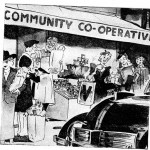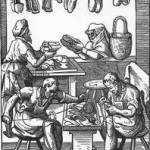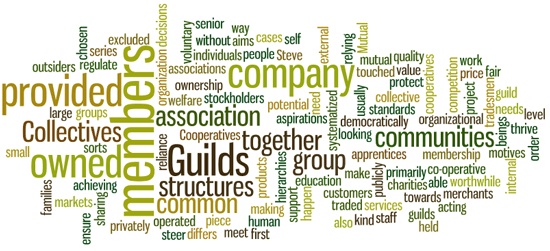As I touched on in the first piece of this series it is only communities that will make self reliance happen on the kind of level that we need, and in order to ensure that these communities thrive it is worthwhile looking at organizational structures that are able to protect and support potential groups as they steer their way towards achieving their aims. I have chosen structures here that are fair and that value human beings before external motives.
Cooperatives – A co-operative is a group of people acting together to meet the common needs and aspirations of its members, sharing ownership and making decisions democratically. 
Guilds – A guild in an association of tradesmen or merchants who provided the same sorts of products or services.
Guilds regulate the markets for their members. They excluded competition from outsiders, but they also provided price and quality standards. Guilds systematized the education of apprentices. They provided for the welfare of members and their families. In some cases, they operated charities. 
Mutual associations– A mutual association is primarily an organization, or a company, which is owned by its members or customers. This differs from a privately held company, owned usually by a few senior staff, or a publicly traded company, owned by stockholders.
Collectives – A collective is a group of individuals who work together on a common project without relying on internal hierarchies. Collectives can be large or small, and membership in them is voluntary.
Steve

